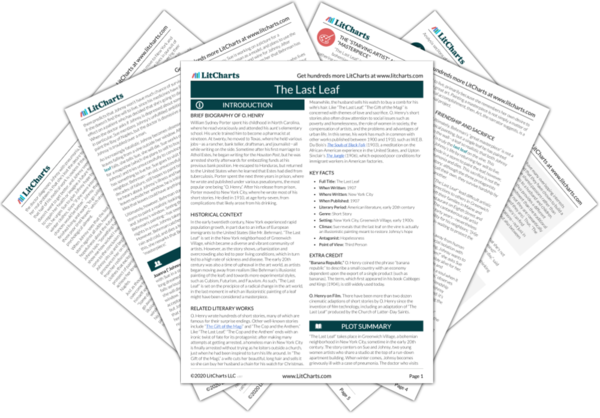AI ToolsNew
Tools to make learning and teaching easier
The Last Leaf Study Guide |
Next
Summary
|
Welcome to the LitCharts study guide on O. Henry's The Last Leaf. Created by the original team behind SparkNotes, LitCharts are the world's best literature guides.

“Banana Republic.” O. Henry coined the phrase “banana republic” to describe a small country with an economy dependent upon the export of a single product (such as bananas). The term, which first appeared in his book Cabbages and Kings (1904), is still widely used today.
O. Henry on Film. There have been more than two dozen cinematic adaptions of short stories by O. Henry since the invention of film technology, including an adaptation of “The Last Leaf” produced by the Church of Latter-Day Saints.